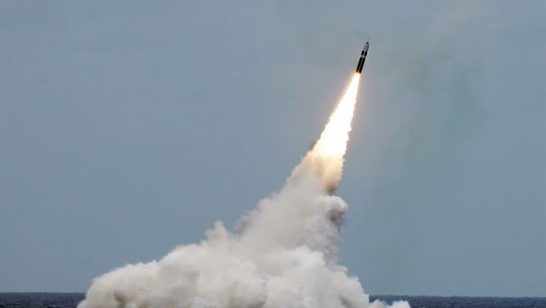
At a time when NATO claims it is committed to creating the conditions for a world free of nuclear weapons, a new European Leadership Network (ELN) report shows the Alliance is planning to use scarce resources to upgrade tactical nuclear weapons in Europe, and doing so in ways likely to worsen the relationship with Russia.
This report, authored by Ted Seay, a Senior Associate Fellow of the ELN, and until Autumn 2011 the Arms Control Advisor to the United States Mission at NATO, describes how NATO is planning to replace “dumb” free-fall nuclear bombs and ageing delivery aircraft, with precision guided weapons and stealth enabled bombers. Despite rhetoric to the effect that NATO is seeking a strategic partnership with Russia, this will increase NATO’s ability to reach targets in Russia with tactical nuclear weapons at a time when NATO and Russia are already locked in a tense stand-off over missile defence.
Key Facts from the report include:
- NATO currently possesses approximately 180 B61 free fall tactical nuclear bombs in Europe. The aircraft to deliver these bombs are European, deployed in five countries (Belgium, the Netherlands, Italy, Germany and Turkey). The bombs have no guidance systems and the aircrafts tasked with delivering them are ageing and in need of replacement. The tactical nuclear weapons in question are relics of the Cold war, originally deployed to help NATO counter massive Soviet conventional force superiority in central Europe. They are now widely seen to have no real military purpose or value.
- The US government, despite impending defence spending cuts, is planning to upgrade the bombs with precision guidance systems at a cost of $4 billion.
- European countries, whose pilots are trained to deliver the B-61s to target, are also facing expensive decisions to replace the relevant aircraft, which are now coming to the end of their effective service lives. Each replacement aircraft – (the US F-35 Joint Strike Fighter) – is slated to cost from $90 million to just over $110 million.
- The new aircraft will come with advanced stealth technology, allowing them to potentially reach targets without detection.
- The nuclear force modernisation plans, if carried through, will therefore produce a “formidable increase in nuclear capabilities for NATO in Europe”, rendering these weapons more credibly usable in war-fighting scenarios with Russia. Modernisation, in other words, will be a form of expensive nuclear escalation by default which can be expected to draw a hostile reaction from Moscow.
- While some in Eastern Europe argue that these tactical nuclear forces are needed to re-assure NATO allies of the US commitment to European security, the report stresses that alternative paths to achieve this goal are possible. If the goal of east European allies is also to have the many Russian tactical nuclear warheads removed from European territories of Russia, then again NATO policy is unlikely to help.
The opinions articulated above represent the views of the author(s), and do not necessarily reflect the position of the European Leadership Network or any of its members. The ELN’s aim is to encourage debates that will help develop Europe’s capacity to address the pressing foreign, defence, and security challenges of our time.


